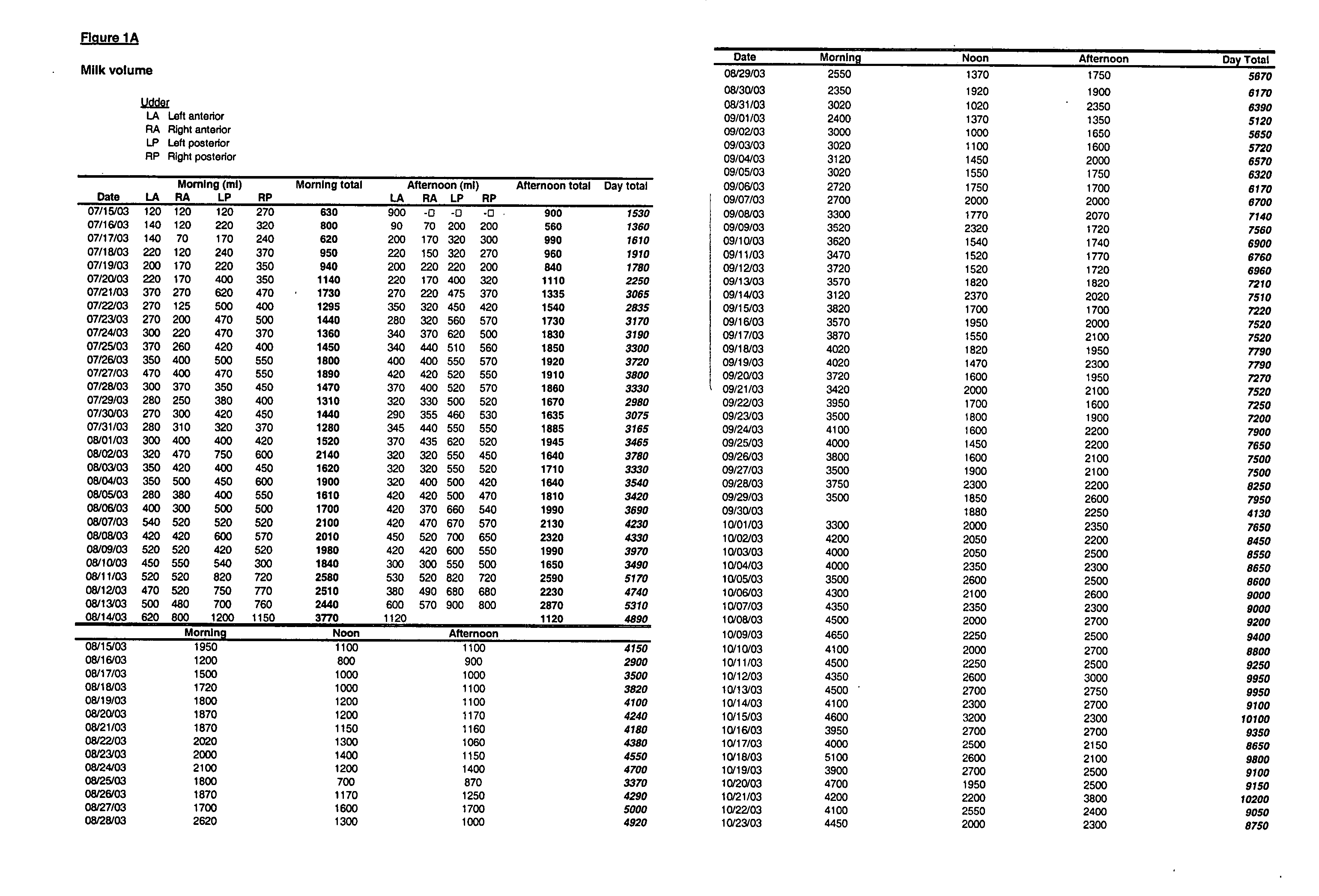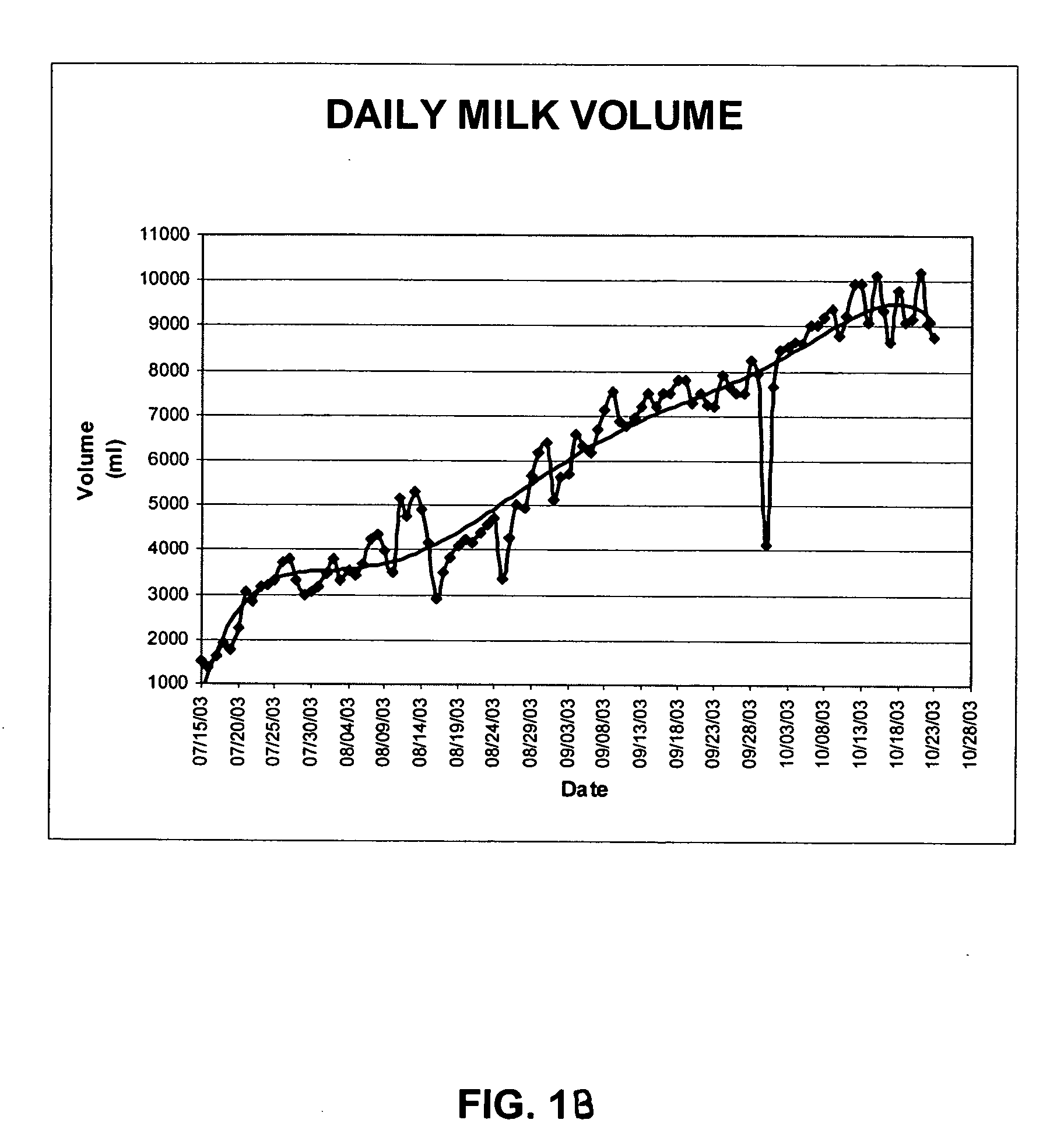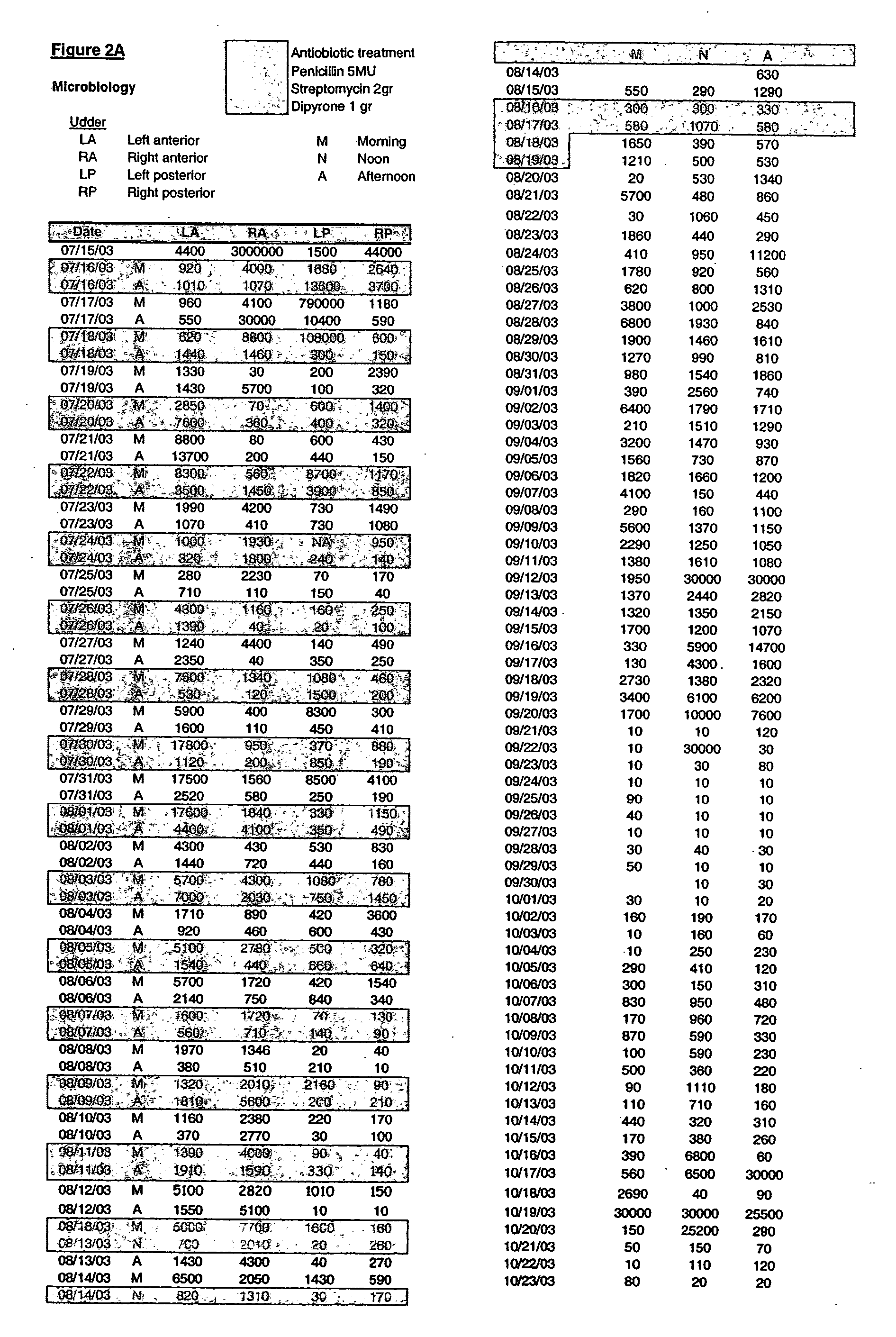Process of making transgenic mammals that produce exogenous proteins in milk and transgenic mammals produced thereby
- Summary
- Abstract
- Description
- Claims
- Application Information
AI Technical Summary
Benefits of technology
Problems solved by technology
Method used
Image
Examples
example 1
Construction of Expression Plasmids
[0068] We generated a construct bearing a large portion of the bovine beta casein gene promoter, including a short fragment of the 5′ non-coding beta casein gene region, fused to the coding sequence of the human growth hormone gene. The beta casein region employed in different constructs was decreased from 3.8 kbp to about 1.3 kbp. The hGH gene encompasses about 2 to 2.2 kbp depending on whether the intrinsic polyA signal is included.
[0069] The expression cassette was accommodated in the polylinker of a usual cloning vector of the pUC or pBS type.
[0070] This promoter ensures the tissue specific and developmentally regulated expression of genes under its control, like beta casein, and the heterologous hGH in this case.
[0071] The most representative plasmid is pRβhGH, which carries the full-lenght bovine beta casein promoter, fused to the coding sequence of the human growth hormone gene.
[0072] Other constructs disclosed are mainly derived from t...
example 2
Oocyte Enucleation and Metaphase Nuclear Transfer in Mature Enucleated Oocytes
Collection and In vitro Maturation of Bovine Oocytes
[0087] Bovine oocytes were aspirated from slaughterhouse ovaries and matured in TCM-199+5% FCS at 39° C. for 24 hs. The maturation medium was equilibrated with CO2 for at least 2 hours prior to use. Mature oocytes were denuded by vortexing for 2 minutes in warm TL-HEPES with 1 mg / ml bovine testis hyaluronidase.
Nuclear Transfer with Cumulus Cells
Enucleation
[0088] Oocytes were mechanically enucleated using a Narishige hydraulic micromanipulators and Nikon Diaphot microscopy. Enucleation was performed with 20 μm beveled and sharpened pipettes. Oocytes were previously stained with 5 μg / ml bisbenzimidine (Hoechst 333421) dye for 20 minutes. Metaphases were enucleated by visualization of the stained chromosomes under ultraviolet light. Metaphase chromosomes were assessed after aspiration inside the pipette. A transgenic somatic cell was transferred into th...
example 3
[0092] Different donor cells, culture systems and oocyte recipient treatments were tested in an experiment aimed at simplifying procedures and increasing embryo survival rate in a bovine cloning program. Three culture systems for reconstructed embryos were used when adult fibroblasts were used as donor cells: TCM-199+5% FCS, Menezo+5% FCS (both with VERO cells as co-culture) and SOF without co-culture but with lower O2 concentration. SOF medium was also used to culture reconstructed embryos when donor cell were genetically and non-genetically modified fetal fibroblasts. Finally, when genetically modified fetal fibroblasts were used as donor cells, recipient oocytes were previously treated with roscovitine (R), to suspend meiosis and optimize recipient usability. Oocytes were aspirated from slaughterhouse ovaries and matured in TCM-199+5% FCS at 39° C. for 24 hours. For R treated group, oocytes were incubated with 25 μM R in TCM 199+5% FCS for 24 hours at 39° ...
PUM
| Property | Measurement | Unit |
|---|---|---|
| Mass | aaaaa | aaaaa |
| Mass | aaaaa | aaaaa |
| Mass | aaaaa | aaaaa |
Abstract
Description
Claims
Application Information
 Login to View More
Login to View More - R&D
- Intellectual Property
- Life Sciences
- Materials
- Tech Scout
- Unparalleled Data Quality
- Higher Quality Content
- 60% Fewer Hallucinations
Browse by: Latest US Patents, China's latest patents, Technical Efficacy Thesaurus, Application Domain, Technology Topic, Popular Technical Reports.
© 2025 PatSnap. All rights reserved.Legal|Privacy policy|Modern Slavery Act Transparency Statement|Sitemap|About US| Contact US: help@patsnap.com



